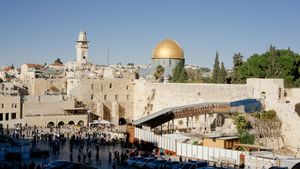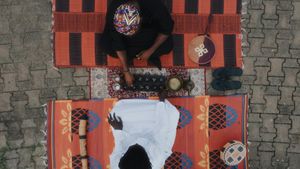Violence erupted in Kurram district, located in northwestern Pakistan, over the recent days, marking yet another tragic chapter in the country’s long history of sectarian strife. This outbreak of clashes has led to at least 82 fatalities, with authorities reporting 156 individuals injured from November 21 to November 23, according to local administration officials.
While Pakistan predominantly follows Sunni Islam, Kurram is home to a notable Shia minority, which has been involved in clashes with Sunni groups for decades, often ignited by disputes over land and tribal allegiance. The latest round of violence was sparked when gunmen ambushed two separate convoys of Shia Muslims who were under police protection. The initial assault—taking place on Thursday—resulted in over 40 deaths and precipitated two days of heavy gun battles.
“The clashes and convoy attacks from November 21 to 23 have resulted in 82 fatalities and 156 injuries,” stated an anonymous local official. Of the deceased, 66 were reported to be Shia, and 16 Sunni, reflecting the deeply entrenched sectarian divisions. Eyewitnesses described the chaos during the ambush, detailing how individuals were caught in indiscriminate gunfire.
Through the turmoil, around 300 families fled their homes as the fighting, which involved both light and heavy weaponry, escalated late Saturday. Fortunately, no additional casualties were reported on Sunday morning, as reported by local media.
The mobile networks across Kurram have been suspended, and traffic on key highways has been brought to a standstill. Meanwhile, security forces are facing immense challenges to quell the violence, with the region’s history of conflict complicity hindering effective intervention. The district, prior to its merger with Khyber Pakhtunkhwa province back in 2018, was part of the semi-autonomous Federally Administered Tribal Areas.
Discussions between provincial government representatives and community leaders from both sects are urgent. A delegation comprised of officials held talks with Shia leaders on Saturday, with plans to meet Sunni leaders shortly thereafter. During their attempt to broker peace, the helicopter carrying negotiators unexpectedly came under fire, though no injuries were reported among the delegation members. Provincial Law Minister Aftab Alam Afridi emphasized the necessity to secure a ceasefire, stating, “Our priority today is to broker peace between both sides. Once we achieve this, we can start addressing the underlying issues.”
Such clashes have been recurrent, with previous incidents just months earlier resulting in considerable casualties. For example, last month saw 16 lives lost, including women and children, due to sectarian clashes. The Human Rights Commission of Pakistan (HRCP) reported 79 deaths attributed to sectarian violence between July and October this year.
On Friday, as the violence escalated, hundreds of demonstrators took to the streets of Lahore and Karachi, condemning the government for what they perceive as negligence. The protests were fueled by communal grief and outrage, particularly targeting local authorities’ inability to safeguard Shia Muslims during the recent attacks.
Traditional tribal councils, known as jirgas, have occasionally intervened to restore calm, with past ceasefires often being brokered through these assemblies. The situation remains fragile, as past engagements have struggled to maintain tranquility amid surging tensions.
Local residents have reiterated their call for the government to take immediate action, with many claiming long-standing grievances have been disregarded. Civil organizations and activists have pressed officials to attend to the underlying causes of violence, emphasizing the alarming increase of sectarian conflicts exacerbated by easy access to heavy weaponry among local factions.
Kurram district lies strategically near Pakistan's border with Afghanistan, making it susceptible not only to local rivalries but also to interference from militant groups like Tehrik-e-Taliban Pakistan (TTP) and other extremist factions. Analysts warn these elements complicate efforts to stabilize the region, with rampant insecurity fostering ideal conditions for violence.
The death toll remains precarious as sporadic clashes continue, prompting authorities to impose curfews and mobilize additional forces. Witnesses report simmering anger and fear gripping the local communities, as uncertainty looms over the potential for more violence.
Prime Minister Shehbaz Sharif condemned the attacks categorically, labeling them “sheer brutality,” and echoed calls for holding the culprits accountable. Yet, the possibility of lasting peace seems elusive amid the backdrop of chronic animosity and rivalry.
The Pakistani government faces intensified scrutiny over its effectiveness in managing sectarian violence, which has significantly deteriorated security and humanitarian conditions for countless families trapped within these conflicts. Local and national leaders concede the need for effective security reforms to restore faith among constituents deserted by the state’s protective measures.
Despite the Prime Minister's vows and official intentions to broker peace, Kurram district remains steeped in the shadows of violence. Activists and regional authorities alike are calling for more proactive and preventive steps to mitigate the incendiary effects of sectarianism, urging the government to bolster its enforcement mechanisms to protect vulnerable communities.
With hundreds of lives lost and communities torn apart, the path to reconciliation is exacerbated by historical grievances, ideological divides, and increasingly violent confrontations. Recovering peace will necessitate both dialogue and determined political will, marking the primary challenge for Pakistan’s leaders as they work to address the continuing specter of violence haunting Kurram district and beyond.



